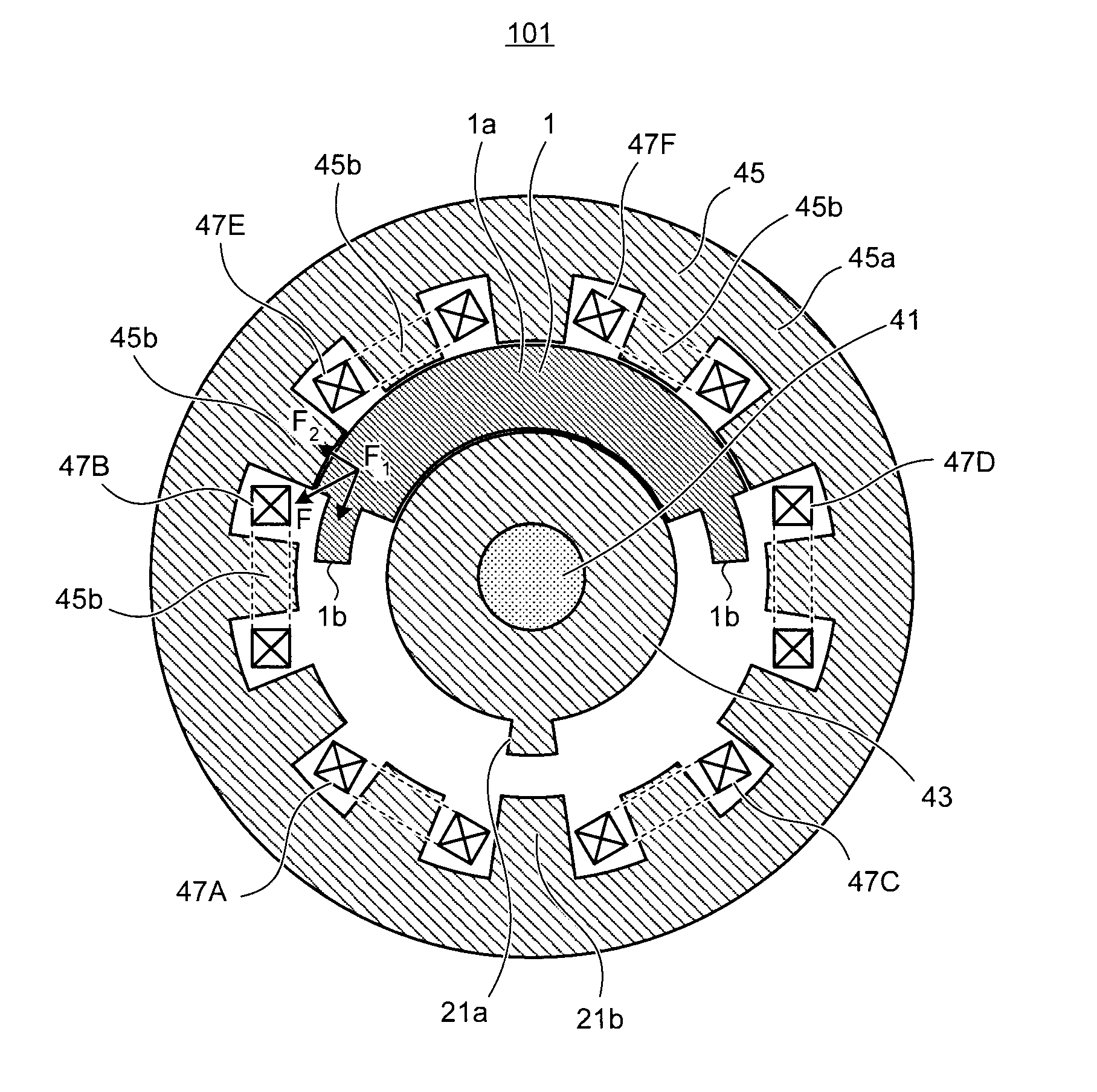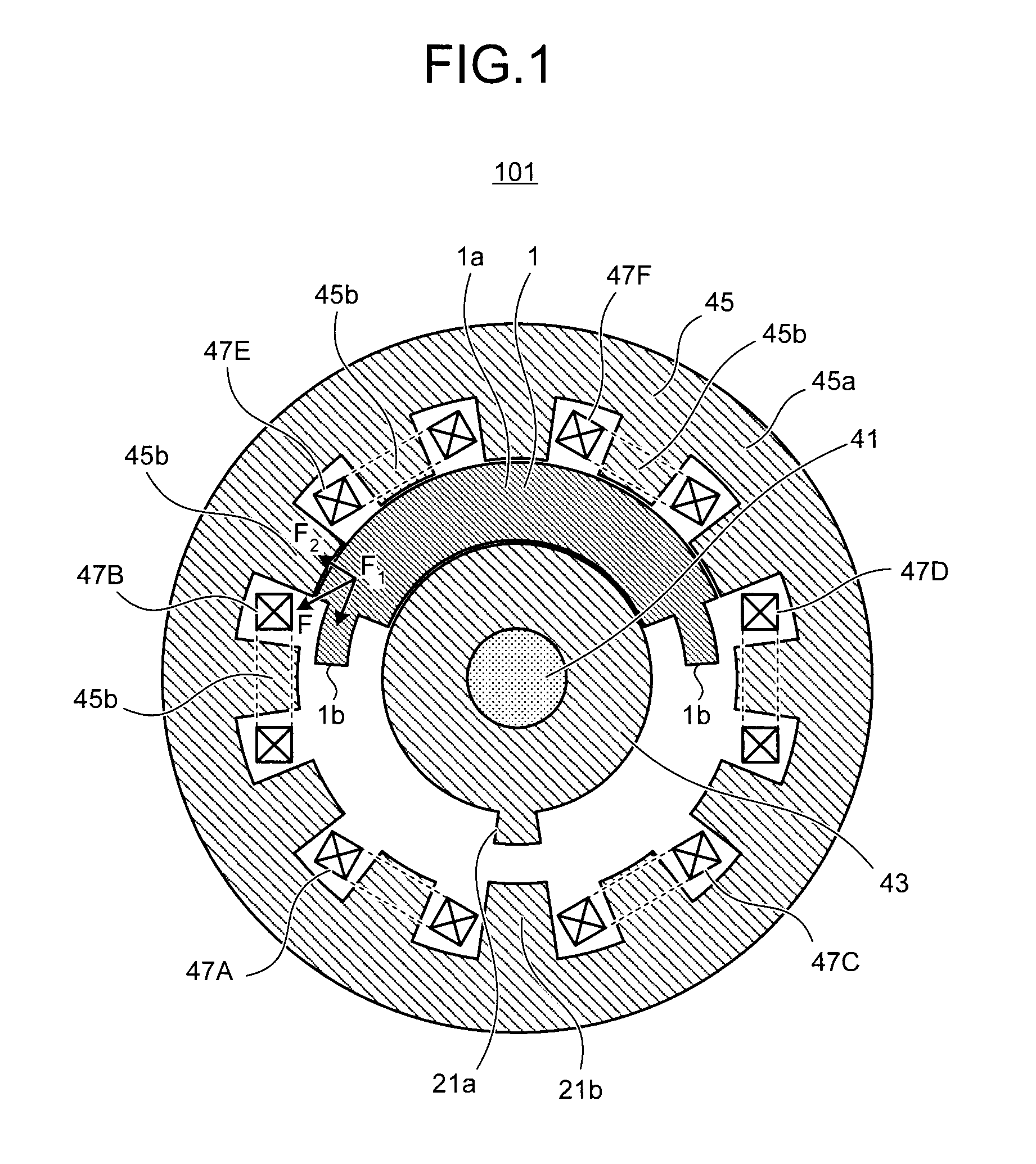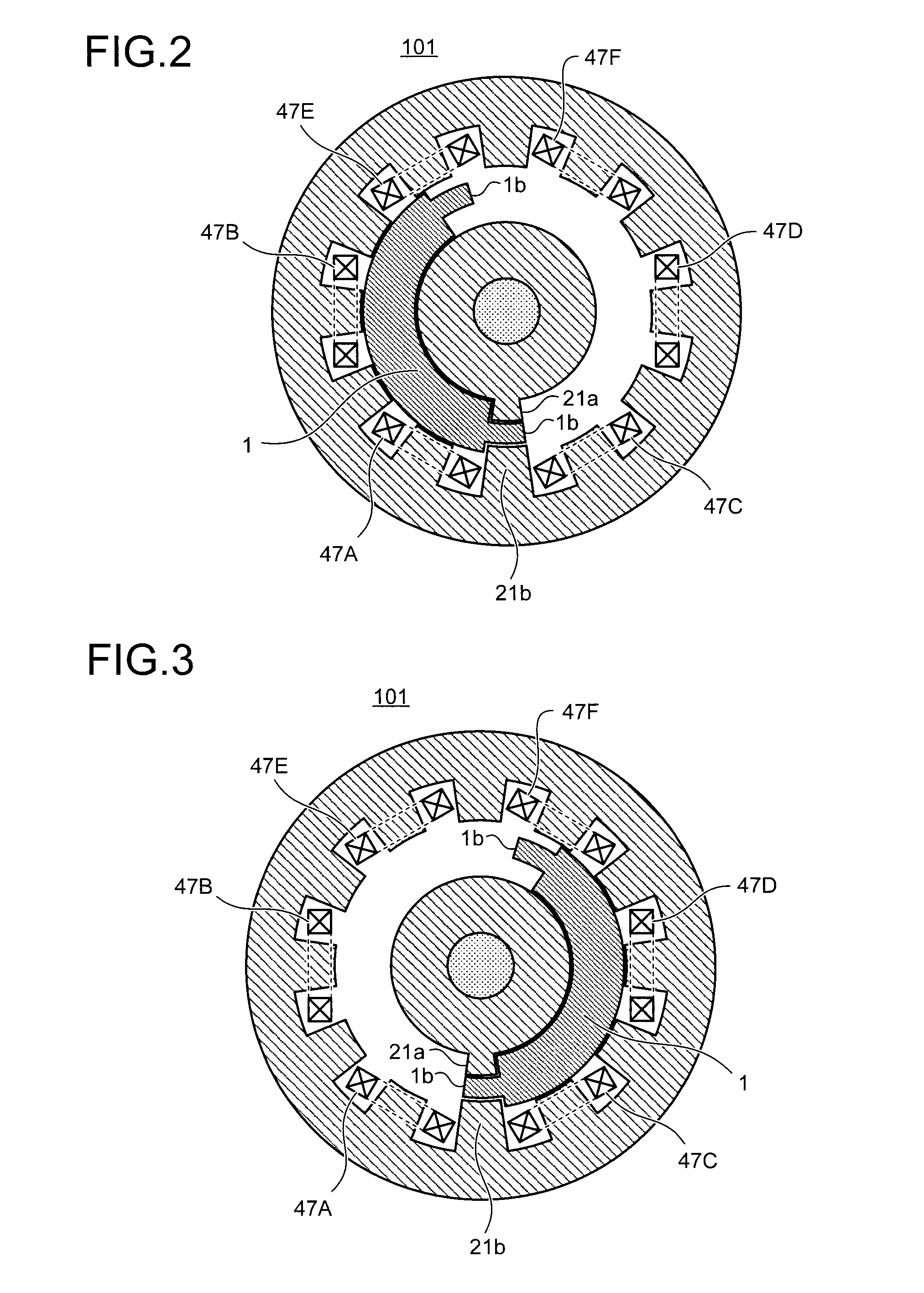Three-stable oscillating electromagnetic actuator
- Summary
- Abstract
- Description
- Claims
- Application Information
AI Technical Summary
Benefits of technology
Problems solved by technology
Method used
Image
Examples
first embodiment
[0080]FIG. 1 is a cross-sectional view of a three-stable oscillating electromagnetic actuator according to a first embodiment of the present invention, and depicts a state where a mover is in a neutral position. FIG. 2 is a cross-sectional view of a state where the mover is in a first stable position. FIG. 3 is a cross-sectional view of a state where the mover is in a second stable position. As shown in FIG. 1, a three-stable oscillating electromagnetic actuator 101 includes a center member 43 provided around a rotation shaft 41; a stator 45 coaxially provided around the center member 43 at a predetermined distance and from which plural teeth (first magnetic poles) 45b project toward a center direction; and a mover 1 that is arranged in a cylindrical space formed between the center member 43 and the stator 45, extends in a circumferential direction, and is supported to be capable of reciprocatingly rotating in the circumferential direction. The three-stable oscillating electromagnet...
second embodiment
[0092]FIG. 9 is a cross-sectional view of a three-stable oscillating electromagnetic actuator according to a second embodiment of the present invention, and is a cross-sectional view of a state where magnetic fluxes are generated at an initial stage of a driving operation from a neutral position to a first stable position. As shown FIG. 9, in a three-stable oscillating electromagnetic actuator 102 according to the present embodiment, a mover 2 is not provided at its end with an engaging convex portion. Corresponding to this configuration, a stopper made of a magnetic material that operates as a second magnetic pole is continuously formed from the center member 43 to the stator 45 without interruption. Other configurations of the second embodiment are the same as those of the first embodiment.
[0093]FIG. 10 is a cross-sectional view of a state where magnetic fluxes are generated at a later stage of the driving operation from the neutral position to the first stable position. FIG. 11 i...
third embodiment
[0095]FIG. 13 is a cross-sectional view of a state of a three-stable oscillating electromagnetic actuator according to a third embodiment of the present invention, and is a cross-sectional view of a state where magnetic fluxes are generated at a initial stage of a driving operation from a neutral position to a first stable position. As shown in FIG. 13, in a three-stable oscillating electromagnetic actuator 103 according to the present embodiment, a mover 3 includes a main unit 3a having an arc cross section, and engaging convex portions 3b and 3b formed on both ends of the main unit 3a in a rotation direction. The engaging convex portions 3b and 3b project from innermost-diameter sides of the ends of the main unit 3a. Corresponding to this configuration, a stopper 23 made of a magnetic material that operates as a second magnetic pole is formed as a projection upright from the stator 45 toward a center member 43. Other configurations of the third embodiment are the same as those of ...
PUM
 Login to View More
Login to View More Abstract
Description
Claims
Application Information
 Login to View More
Login to View More - R&D
- Intellectual Property
- Life Sciences
- Materials
- Tech Scout
- Unparalleled Data Quality
- Higher Quality Content
- 60% Fewer Hallucinations
Browse by: Latest US Patents, China's latest patents, Technical Efficacy Thesaurus, Application Domain, Technology Topic, Popular Technical Reports.
© 2025 PatSnap. All rights reserved.Legal|Privacy policy|Modern Slavery Act Transparency Statement|Sitemap|About US| Contact US: help@patsnap.com



